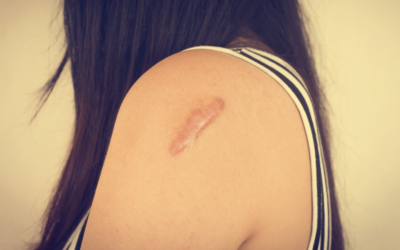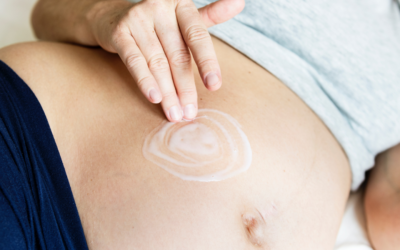EFFECTIVE WAYS OF REMOVING SCARS ON LEGS
While scars are an inevitable part of wound healing, it can be very frustrating because most scars don’t go away fully. But thankfully, there are some over-the-counter options that help reduce the appearance of scars. The best way of treating wounds in order to reduce scars on your legs or body is by treating the wound properly. This can prevent the scar tissue from forming and here are some recommended tips:
- Make sure that the injured area is clean
- Use petroleum jelly to moisturize
- Cover the skin with a bandage and change the bandage daily
- When the wound has healed, use sunscreen on the wound area
- If your wound is deep or gets infected, seek medical care right away
Hypertrophic or raised scars and keloid scars can be avoided or reduced while the wound is still healing. Dermatologists would sometimes suggest treatments such as laser therapy, pressure therapy, polyurethane dressing or cryosurgery.
Different types of scars
The treatment for the scar on your leg depends on the type of scar and what caused it. Scar types can be identified by how it looks:
- Atrophic scars are flat against the skin and are darker than the surrounding skin. Some examples are chickenpox and acne scars.
- Hypertrophic scars are over the affected skin and is darker than the surrounding skin.
- Keloid scars are thick, fluffy and raised and it can grow out of the affected area.
- Contracture scars are often a result from burns when a large area of the skin is damaged or lost, making the remaining skin shiny and tight.
How to treat burn scars on your legs?
Burn scars appear when the extra collagen appears when the body heals the burns. First-degree burns usually don’t leave scars and second and third-degree burns are more severe and hence, call for medical care.
Another type of scar that appears on the legs are razor bumps or razor burns. These appear on the legs after shaving and ingrown hairs are usually the cause of razor bumps. The affected area will become red and inflamed and bumps may start becoming visible too. Luckily, treating razor burns are easy. Ensure that you allow the area to heal before shaving again and try to reduce the frequency of shaving, at least by one day. Remember to moisturize after shaving and exfoliate your skin before shaving in order to release ingrown hair. You may also apply aspirin paste to the affected area and aloe vera, witch hazel, coconut oil or tree tea oil works great too. You may also try a hydrocortisone cream. If your razor bumps don’t heal in three weeks, you may need to check with your doctor who may prescribe an oral or topical medication.
When it comes to atrophic scars on your legs, a licensed dermatologist may recommend the following treatment depending on several factors pertaining to the scar:
- Chemical peels – This destroys the damaged layer of the skin with the help of chemicals as it reveals healthier skin underneath.
- Fillers – This is a process where the indented scars are raised to match the surrounding skin with the use of dermal fillers such as hyaluronic acid or with the help of injections.
- Skin needling – This is a process of puncturing the skin with small needles to regenerate a healthier layer of skin.
- Punch excision – This is where the scar tissue is removed with a needle that is of the size of your scar and the area is then closed with stitches. In a punch graft, the scar area is filled with healthy tissue before it is closed to heal. When combined with laser resurfacing, this treatment can improve the appearance of scars.
- Subcision – This treatment is where the depressed area is loosened with a needle and a new wound forms as the normal layer of the skin.
Treating old scars on your legs are harder though since scars that are older than a few years are usually there to stay. Having said that, there are some treatments that can fade scars. Here are some home remedies that may help:
- Oils and essential oils
Essential oils help greatly in improving the appearance of scars as they encourage skin cells in the affected area to grow. Some common essential oils used to treat scars in legs are rosehip seed oil, frankincense oil, lavender oil, carrot seed oil geranium oil, helichrysum essential oil, tea tree oil, neroli oil, cedarwood oil, and hyssop oil. Similarly, vitamin E oil, coconut oil, and almond oil are effective too.
- Massage
Massaging can help the scar tissue to heal by flattening and softening it. It also helps the scar tissue from sticking to the blood vessels, nerves, bones, tendons and muscles.
- Exfoliate
Use an exfoliating cleanser and loofah to gently exfoliate your skin at least once in three days. Then, dry the area and apply a good moisturizer.
While your wound is healing, you may try some products that can keep the scar relatively smaller and less noticeable. Place an adhesive bandage over the wound and change it frequently to make sure that the dressing is clean. Sunscreen can be applied to the scans to prevent it from discolouring further. Some over-the-counter products like silicone ointments can be used on the wound after it has closed to help it heal. Polyurethane dressings can also help scars heal faster. These flexible pads should be worn for six weeks in order to reduce the appearance of the scar.
After your wound has healed completely, you may try a massage to reduce the scar. Also, scabs may fall off from the wound and if so, apply sunscreen on the new patch of skin. Moisturizers, especially those infused with essential oils can help keep the skin supple and help remove scar marks.
If your scars are persistent and nothing is making it fade away, then you may want to consult a dermatologist who would recommend treatment options such as:
- Pressure therapy. Pressure dressings are available over the counter but you will have to consult your doctor on how to apply it properly.
- Laser therapy where focused beams of lights can remove damaged skin.
- Bleomycin, corticosteroid, 5-FU injections which are placed on the scar to reduce its size.
- Scar surgery which is a surgical treatment that is a last option.
Here are some important tips to remember:
- Avoid exfoliating daily
- Avoid massaging before the wound has healed
- Avoid picking at the scars or scabs
- Don’t expect the scar to disappear completely
- Avoid using treatments that are not supported by a licensed professional
While most scars cannot be removed, many can be reduced with treatments, home remedies and creams. One such scar removal cream in Sri Lanka that has received a lot of positive feedback is a Palmers Sri Lanka product called the Cocoa Scar Serum. This serum contains a Cocoa butter formula with Vitamin E and can reduce the appearance of scars when applied 3-4 times daily.




Leave a Reply